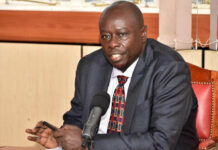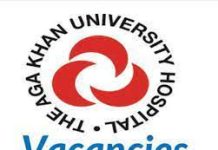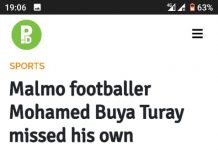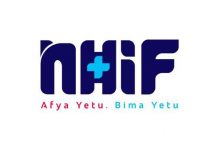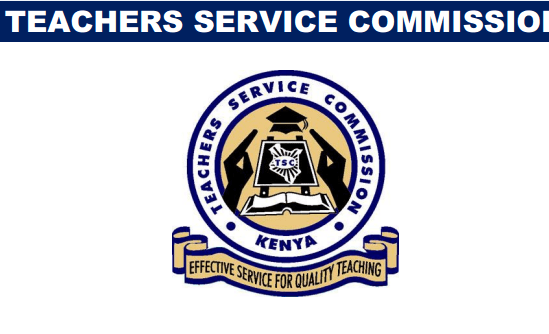
TSC: Teacher Promotion Interview Questions and their Answers
Whenever TSC advertises vacancies for promotion of teachers. A number of teachers are expected to apply over the same at the same time Some will be called to attend for interviews. Most will be wondering what are the questions they will expect from the panel.
If you among of these group wondering the questions you will be asked and the response to give, worry not reason being this guide will give you a clue on possible questions and expected answers.
The following are TSC Interview Questions on Education and Pedagogy for Teacher Job Group Promotion by the Teachers Service Commission.
The panel majorly asks questions related to TSC, KICD, MOE and any other education related sector.
1.What is the structure of the Ministry of education?
The Ministry of Education is led by the Cabinet Secretary. Under him are 3 Principal Secretaries and finally the Director General under them.
2.What is the overall role of the Minister for Education?
Formulation of policy direction and management of professional functions relating to education.
Developing and implementing projects and programmes.
Developing curriculum.
Initiating training programmes.
Running examinations.
Giving grant-in-aid to schools.
Dealing with audit report
Admitting and transferring students.
Dealing with discipline of students.
3.Who publishes for the Ministry of Education?
Kenya Literature Bureau KLB
4.What is the role of Kenya Institute of Curriculum Development KICD, inspectorate and Kenya National Examinations Council K.N.E.C?
Mandates of the KICD
The Kenya Institute of Curriculum Development (KICD) is mandated to perform the following functions:
Advise the Government on matters pertaining to curriculum development
Evaluate, vet and approve, for application in Kenya, any local and foreign curricula and curriculum support materials in relation to the levels of education and training
Implement the policies relating to curriculum development in basic and tertiary education and training;
Initiate and conduct research to inform curriculum policies, review and development.
Collect document and catalogue information on curricula, curriculum support materials and innovations to create a data bank and disseminate the information to educational institutions, learners and other relevant organizations
Print, publish and disseminate information relating to curricula for basic and tertiary education and training
Collaborate with other individuals and institutions in organising and conducting professional development programmes for teachers, teacher trainers, quality assurance and standards officers and other officers involved in education and training on curriculum programmes and materials
Develop disseminate and transmit programmes and curriculum support materials through mass media, electronic learning, distance learning and any other mode of delivering education and training programmes and materials
Promote equity and access to quality curricula and curriculum support materials
Offer consultancy services in basic and tertiary education and training
Incorporate national values, talent development and leadership values in curriculum development
Receive, consider, develop and review curriculum proposals
Perform such other function as may be assigned to it under the KICD Act No.4 of 2013 or any other written law.
Develop, review and approve programmes, curricula and curriculum support materials that meet international standards for : early childhood care, development and education, pre-primary education, primary education, secondary education, adult, continuing and non-formal education, teacher education and training, special needs education and technical and vocational education and training.
Providing oversight on management of the school.
Monitoring curriculum delivery and learning achievement in the school.
Mo ensure that the students engage in extra curriculum activities.
To ensure the competence of the teachers in delivery of the content of the curriculum.
Develop all institutional policies and ensure accountability and prudent use of institutional resources.
Mobilising resources for the institution development based on agreed strategic planning.
To promote networking and partnership for the school
To discuss and approve comprehensive termly and annual reports and forwards them to the county education board (CEB).
To promote quality education and training for all learners in accordance with the standards set under the education acts, national policies, and county government policies
To supervise and ensure quality in curriculum implementation and delivery and oversee the conduct of examination and assessments of school.
To ensure and assure provision of proper and adequate proper physical activities as well as teaching and learning resources in order to create an enabling environment for the school community to perform their duties effectively and achieve set objectives of the institution.
The core functions of the KNEC are to:
Develop national examination tests;
Register candidates for the KNEC examinations;
Conduct examinations and process the results;
Award certificates and diplomas to successful candidates;
Issue replacement certificates and diplomas;
Conduct educational assessment research;
Conduct examinations on behalf of foreign exam boards.
5.What are the national goals of education?
To foster nationalism, patriotism and promote national unity.
To promote social, economic, technological and industrial needs for national development.
To provide individual development and self-fulfillment. To promote social equality and responsibility.
To promote sound moral and religious values
To promote international consciousness and a positive attitude towards other nations.
To promote a positive attitude towards good health and the environment.
6.What is the composition of the board of Management of a school and how are they chosen?
B.O.M is established under Section 55 of The Basic Education Act 2013.It is composed of;
The head of the schools as the secretary of the board,
6 persons elected to represent parents or local community in case of County Sec. School
1 person nominated by the county board.
1 person representing teaching staff elected by teachers.
3 representatives of school sponsor
1 person to represent special interest group.
1 person to represent persons with special needs.
1 representative of the student council as an ex-officio.
7.Differentiate between the roles of the B.O.M and P.A in a School.
BOM
Some of the responsibilities and roles that are expected of this board includes;
Providing oversight on management of the school.
Monitoring curriculum delivery and learning achievement in the school.
To ensure that the students engage in extra curriculum activities.
To ensure the competence of the teachers in delivery of the content of the curriculum.
Develop all institutional policies and ensure accountability and prudent use of institutional resources.
Mobilizing resources for the institution development based on agreed strategic planning.
To promote networking and partnership for the school
To discuss and approve comprehensive termly and annual reports and forwards them to the county education board (CEB).
To promote quality education and training for all learners in accordance with the standards set under the education acts, national policies, and county government policies
To supervise and ensure quality in curriculum implementation and delivery and oversee the conduct of examination and assessments of school.
To ensure and assure provision of proper and adequate proper physical activities as well as teaching and learning resources in order to create an enabling environment for the school community to perform their duties effectively and achieve set objectives of the institution.
Parent Association – P.A
In order to help the school realize its purpose, parents play some important roles. These include,
Raise money to help both the running and the activities of the school.
Explain the roles of the school to the community, this is how teachers and community members come to a more harmonious relationship.
They give their points of view to the teachers concerning academic improvement and moral standards.
Help head teachers and their staff maintain effective discipline among their students.
8.Define curriculum, co curricular and core curriculum.
Curriculum
All planned learning programs that facilitate formal, non-formal and informal learning.
Co-curriculum
Voluntary curriculum that includes sport, clubs, student government and school publications.
Core curriculum
The body of knowledge, skills and attitudes expected to be learned by all students, generally related to a set of subjects and learning areas that are common to all students.
9.Distinguish between formal, non formal and informal curriculum
Formal curriculum the curriculum in which there are deliberately organized, planned and written processes in a formally organized learning institution such as a school with organized structures such as classrooms.
Non formal curriculum refers to any organized, planned and written learning activity that operates outside the formal education system. It emphasizes practical skills and targets particular population group.
Informal or Hidden curriculum curriculum that constitutes a lifelong process in which people learn from every day experiences which are not necessarily planned or organized.
10.Outline the process of curriculum development.
KICD 9 Stage Curriculum Development Model
KICD has adopted a nine-stage curriculum development model as follows:
Needs Assessment.
Conceptualization and policy formulation.
Curriculum designs.
Development of syllabuses.
Development of curriculum support materials.
Preparation of curriculum implementers.
Piloting/Phasing.
National Implementation.
Monitoring and Evaluation.
11.What is the difference between curriculum and syllabus?
Curriculum
Is all planned learning programs that facilitate formal, non-formal and informal learning while the
Syllabus
Is a course outline comprising a collection of topics on the same subject matter and a series of statements of what is to be learned within a given time frame.
This consists of the content and objectives of the core subjects and optional subjects offered.
12.Give the process of curriculum development.
KICD has adopted a nine-stage curriculum development model as follows:
Needs Assessment.
Conceptualization and policy formulation.
Curriculum designs.
Development of syllabuses.
Development of curriculum support materials.
Preparation of curriculum implementers.
Piloting/Phasing.
National Implementation.
Monitoring and Evaluation.
13.Give cases of interdiction where a teacher earns half salary.
Fraudulent payment or excessive payment from public revenues for goods and services.
Failure to comply with any law or applicable procedures and guidelines relating to procurement.
Mismanagement of funds or incurring expenditures without planning.
Any offence involving dishonesty under any written law providing for maintenance or protection of public revenue.
14.Name the different types of leave a teacher is entitled to and how many days in a year is a permanent and pensionable teacher entitled to annual leave?
Maternity Leave
A female teacher is entitled to 90 calendar days maternity leave from the date of confinement. This leave is exclusive of annual leave. The application for leave should be submitted to the DEO/MEO/DCE through the head of institution at least one month before the leave is due and must have supporting medical documents.
Paternity Leave
A male teacher can apply for paternity leave of up to 10 days within the period of spouse’s maternity leave.
Study leave – with pay
– without pay
Annual leave
Permanent & pensionable – 30 days with full pay each year.
Temporary or contract – 30 days with full pay each year.
Sick leave
Permanent & pensionable – 3 month full pay another 3 month ½ pay in the calendar year.
Temporary or contract – 1 month full pay another 1 month ½ pay
Compassionate leave
In times of distress such as death, a court case, marital disharmony, arson and serious illness of a member of the family – maximum 15 days in a year.
Special leave
Short duration for teachers who have to travel abroad to participate in seminars or short courses or important events – max. 3 months in a year.
Compulsory leave
30 days with full pay to allow investigations into allegations.
Leave without pay
Special conditions eg accompanying a sick person for more than normal 15 days compassionate leave.
15.When is a teacher given study leave with pay?
Has worked for the commission for a min. of 5 years
UT teacher seeking to undertake postgraduate diploma or degree in education.
A teacher studying in an area of great need as specified in the study leave policy.
Trained technical teacher admitted to a national polytechnic for a higher National Diploma provided the subject area is in demand in the teaching service.
Has demonstrated a good record in performance.
16.What are the possible verdicts of interdiction?
A teacher has no offence hence revoke interdiction.
A teacher has committed an offence that does not warrant removal hence;
Warning in writing.
Surcharge
Suspension not exceeding 6 months without pay.
Retire in the public interest
Refered for medical evaluation by Director of Medical Services.
A teacher has committed an offence hence dismissal and deregistered.
17.Differentiate between interdiction and suspension.
Suspension – Temporary prohibition of a teacher from exercising his/her functions as a teacher pending determination of his/her disciplinary case.
Interdiction – removal of a teacher from service in accordance with regulation 153 of the TSC Code.
18.What are the interdiction cases where a teacher does not earn any money?
Chronic absenteeism
Desertion of duty
Having been jailed
Misappropriation/mismanagement of public funds.
Fraudulent claims & receipt of funds.
Use of false certificates.
Forgery, impersonation, collusion & immoral behavior.
19.What is C.B.E? How is it calculated?
Curriculum Based Establishment – the number of teachers a school need in relation to the number of streams a school has. It is calculated by considering the minimum lessons a teacher should teach(27) and the subjects offered in the school.
20.Give cases of interdiction where a teacher earns half salary.
Fraudulent payment or excessive payment from public revenues for goods and services.
Failure to comply with any law or applicable procedures and guidelines relating to procurement.
Mismanagement of funds or incurring expenditures without planning.
Any offence involving dishonesty under any written law providing for maintainance or protection of public revenue.
21.Name four education commissions since independence and what were the recommendations of the commissions.
Ominde Commission (1964)
It reformed the education system inherited from the colonial government to make it responsive to the needs of independent Kenya.
It proposed an education system to foster national unity and create sufficient human resource for national development
English became a medium of instruction
It set the entry age to class one at 6 years.
Bessay Report (1972)
It recommended changes to the inherited curricular to make it relevant to local needs.
Gachathi Report(1976)
The report focused on redefining Kenya’s educational policies and objectives, giving consideration to national unity, economic, social and cultural aspirations of the people of Kenya.
Mackey Report (1981)
It led to the removal of ‘A’ level and expansion of other post-secondary training institutions.
It led to the establishment of Moi University.
It recommended the stablishment of the 8-4-4 system of education and the commission of High Education (CHE)
Kamunge Commission (1988)
It focused on improving education financing, quality and relevance.
From this report , the government produced Sessional Paper No 6 on Education & Training for the Next Decade & Beyond.
This led to the policy of cost sharing in education between the government, parents and community.
Koech Commission (2000)
It recommended Totally Integrated and Quality Education and Training(TIQET) in order to accelerate industrial and technological development.
22.Differentiate between informal education, formal education and non- formal education
Informal Education the truly lifelong process whereby every individual acquires attitudes, values, skills and knowledge from daily experience and the educative influences and resources in his or her environment-from family and neighbours, from work and play, from the marketplace, the library and the mass media…’
Formal Education the hierarchically structured, chronologically graded “educational system”, running from primary school through the university and including, in addition to general academic studies, a variety of specialized programmes and institutions for full-time technical and professional training.’
Non-Formal Education any organized educational activity outside the established formal system-whether operating separately or as an important feature of some broader activity-that is intended to serve identifiable learning clientele and learning.

